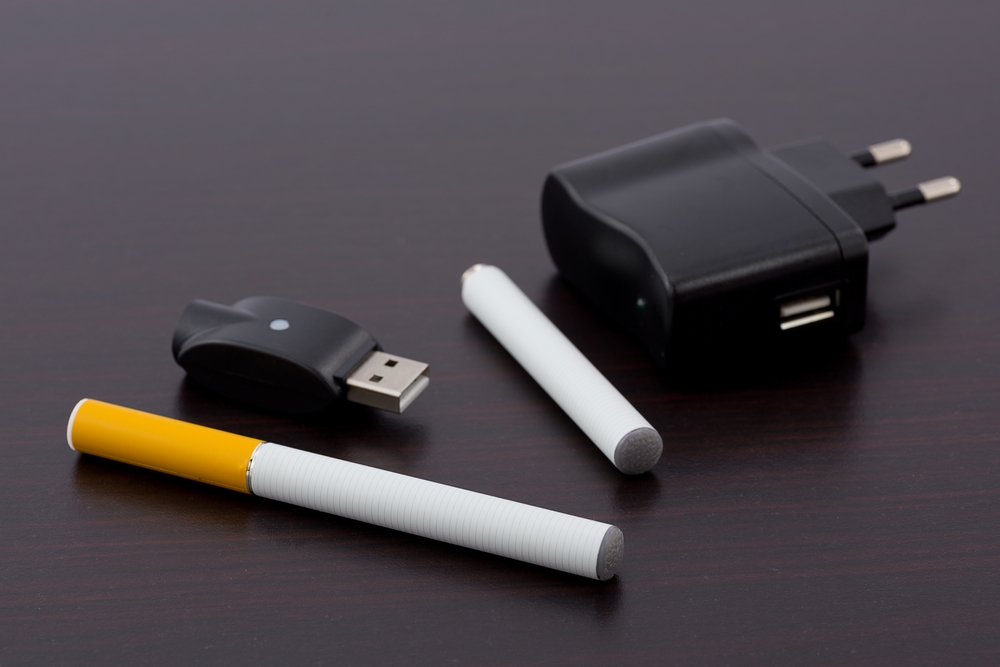Electronic cigarettes—also called personal vaporizers or electronic nicotine delivery systems—are perceived by many smokers as a safer alternative. But according to a recent report from the U.S. Fire Administration (USFA), e-cigarettes come with their own unique risks: namely, fires and explosions.
In fact, a number of recent fires have been attributed to e-cigarettes, causing some concern within the fire service community, according to the USFA. To better understand the problem, the USFA examined media reports of 25 e-cigarette fire incidents in the U.S. dating from 2009 through June 2014, which is not a complete list.
- The battery in the device was being charged in 20 incidents.
- Two incidents occurred during use.
- It wasn’t clear in two incidents whether the e-cigarette was in use, idle or being charged.
- One incident occurred during transportation on a cargo aircraft.
- Ten injuries and no deaths were reported by the media.
- Several burn injuries were reported. Two serious injuries occurred when devices exploded in users’ mouths.
The media reports generally characterize these incidents as explosions because the event occurs suddenly and is accompanied by a loud noise, a flash of light, smoke and flames. The battery or other components were ejected under pressure and are described by the media as flying across the room, often igniting combustible items where they landed. Luckily, most fires were minor, resulting in damage to carpets, drapes, bedding, couches or vehicle seats.
As you might expect, several lawsuits have been filed against e-cigarette manufacturers for injuries received when the e-cigarettes exploded. The most recent suit was filed in Salt Lake City on Nov. 4. According to published reports, the e-cigarette unexpectedly blew up while a man used it at his home in February 2013. The explosion sent burning debris and battery acid into his mouth, face and eyes and caught his hair on fire, the lawsuit says.

466 brands and 7.764 unique flavors
First patented in 2003, e-cigarettes have been sold in the U.S. since 2007. As of January 2014, according to the USFA, there were 466 brands of e-cigarettes and 7,764 unique flavors available for sale, increasing at a rate of 10.5 brands and 242 new flavors per month. In the U.S., annual e-cigarette sales have reached $2.5 billion, and StatisticBrain reports that there were 2.5 million e-cigarette smokers as of July 13, 2014.
As with any legitimate device, some people always find alternate uses. E-cigarettes are sometimes used to smoke hash oil, which is derived by separating the resins from marijuana—a hazardous process often done illegally in hotels and homes. It’s important for first responders to understand the hazards this can present in fighting a fire. It’s become such a problem in Colorado that the Rocky Mountain High Intensity Trafficking Area has developed a presentation for first responders on how to fight hash oil fires.
No fire regulations on the horizon
The U.S. Food and Drug Administration recently proposed regulations for e-cigarettes focusing only on the health effects of inhaling the vapors, not the safety of the battery or electronics. The U.S. Consumer Product Safety Commission has advised that e-cigarettes don’t fall under its jurisdiction either. Underwriter Laboratories (UL) has developed standards that relate to lithium-ion battery safety, however, and generally apply to products containing batteries that undergo UL safety testing, which might be stretched apply to e-cigarettes.
The USFA noted that currently there is no regulation, code or law that applies to the safety of electronics or batteries in e-cigarettes. Although many consumer products are required to be tested by a nationally recognized test laboratory such as UL, there are no such requirements for e-cigarettes.

Don’t charge an e-cigarette in your computer!
All the incidents review by the USFA involved “vape pens” or “twists,” which look a lot more like traditional cigarettes and are intended to be recharged using a USB port built into the e-cigarette and a power adapter supplied with the device. Of the reported incidents, 80% occurred while the e-cigarette was charging. People reported using a variety of charging sources, including laptop USB ports, auto USB adapters, desktop computer USB ports, and wall adapter USB ports.
The USFA noted that few consumers understand that all USB ports are not interchangeable. The voltage and current provided by USB ports can vary significantly. Without consulting the technical specifications for the USB power source, a consumer can’t determine the power supplied by any particular USB port and it’s even more difficult to determine whether it’s safe to use with a particular e-cigarette. As a result, plugging an e-cigarette into a USB port or power adapter not supplied by the manufacturer may subject the battery to higher current than is safe, leading to extreme heat that results in an explosion, a fire, or both.

Best way to prevent explosions and fires?
The lithium ion batteries in e-cigarettes are installed in a cylindrical device that has its weakest structural point at the ends. When the battery seal on the end ruptures, the pressure within the e-cigarette cylinder builds quickly and instantly ruptures, usually at the end. As a result of the battery and container failure, either the battery or the container, or both, can be propelled across the room like a bullet or a small rocket.
The USFA suggests that e-cigarette manufacturers consider changing to a different style of electrical connection. The elimination of a USB-type electrical connection should make it more difficult—but not impossible—for users to overcharge the batteries. Another suggestion is to include protection circuits in the e-cigarettes. Finally, the USFA stresses better education for consumers, including stronger warnings in the literature and user manuals. However, if traditional cigarettes are any indication, the warnings may not be effective.
They [the USFA] accepts that failure rates are low, and that educating vapers to buy responsibly and not just cheaply would lower the figures further, commented Neil Mclaren, Director, Vaping.com. “But it always has to be brought back to the context of smoking. That is, how many house fires are caused by that in comparison.” He add that “We have to be clear that when we say ‘building their own’ it is related to the atomizer system and not the battery unit. If a vaper buys from a reliable source and charges as directed then I would expect incidents to be comparable with the other lithium-ion batteries, such as cell phones.”
A word of caution for agents and brokers: in addition to asking whether your clients smoke tobacco, you may soon have to ask about e-cigarettes as well and factor in that risk when writing the policy.
Want to continue reading?
Become a Free PropertyCasualty360 Digital Reader
Your access to unlimited PropertyCasualty360 content isn’t changing.
Once you are an ALM digital member, you’ll receive:
- Breaking insurance news and analysis, on-site and via our newsletters and custom alerts
- Weekly Insurance Speak podcast featuring exclusive interviews with industry leaders
- Educational webcasts, white papers, and ebooks from industry thought leaders
- Critical converage of the employee benefits and financial advisory markets on our other ALM sites, BenefitsPRO and ThinkAdvisor
Already have an account? Sign In Now
© 2024 ALM Global, LLC, All Rights Reserved. Request academic re-use from www.copyright.com. All other uses, submit a request to [email protected]. For more information visit Asset & Logo Licensing.








